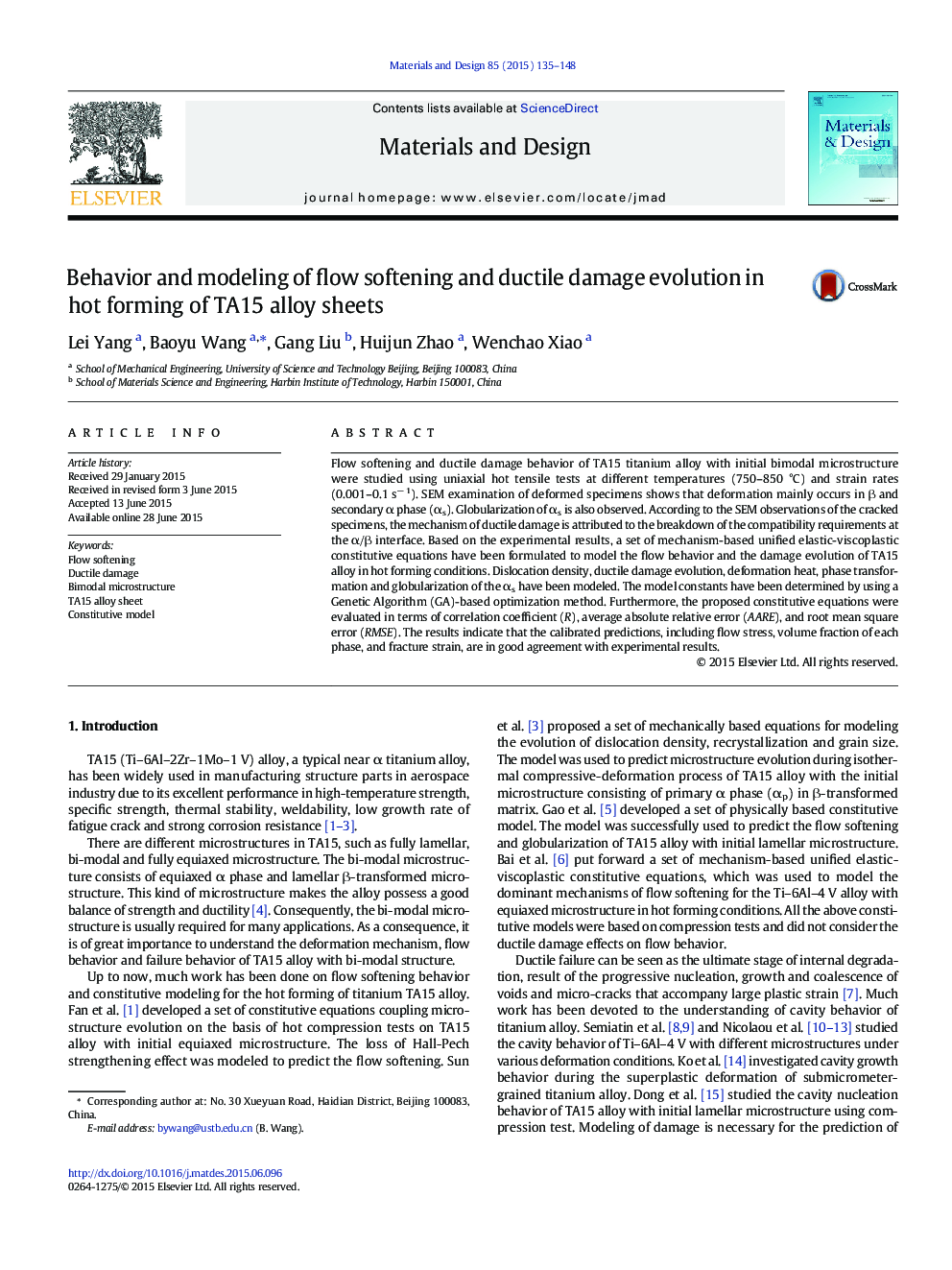| کد مقاله | کد نشریه | سال انتشار | مقاله انگلیسی | نسخه تمام متن |
|---|---|---|---|---|
| 828281 | 1470297 | 2015 | 14 صفحه PDF | دانلود رایگان |

• Flow softening and ductile damage of TA15 have been studied by hot tensile tests.
• The flow softening is discussed in relation to globularization of the secondary α.
• The ductile fracture is discussed in relation to the ductile damage evolution.
• A mechanism based unified viscoplastic damage constitutive model is established.
• The model is statistically analyzed in application to the flow curves of TA15.
Flow softening and ductile damage behavior of TA15 titanium alloy with initial bimodal microstructure were studied using uniaxial hot tensile tests at different temperatures (750–850 °C) and strain rates (0.001–0.1 s− 1). SEM examination of deformed specimens shows that deformation mainly occurs in β and secondary α phase (αs). Globularization of αs is also observed. According to the SEM observations of the cracked specimens, the mechanism of ductile damage is attributed to the breakdown of the compatibility requirements at the α/β interface. Based on the experimental results, a set of mechanism-based unified elastic-viscoplastic constitutive equations have been formulated to model the flow behavior and the damage evolution of TA15 alloy in hot forming conditions. Dislocation density, ductile damage evolution, deformation heat, phase transformation and globularization of the αs have been modeled. The model constants have been determined by using a Genetic Algorithm (GA)-based optimization method. Furthermore, the proposed constitutive equations were evaluated in terms of correlation coefficient (R), average absolute relative error (AARE), and root mean square error (RMSE). The results indicate that the calibrated predictions, including flow stress, volume fraction of each phase, and fracture strain, are in good agreement with experimental results.
Figure optionsDownload as PowerPoint slide
Journal: Materials & Design - Volume 85, 15 November 2015, Pages 135–148